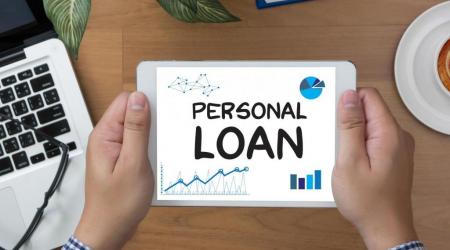5 Need To Know Facts About Personal Loans
We all want to make the best decisions possible for our financial future. To do that, we need to be as well-informed as possible. But when it comes to the complexities of banking, particularly all the fine print that comes from loans, it can be difficult to do that. How do you get an honest, thorough breakdown of everything you need to know about personal loans? We’ve done the research and delved deep into everything you need to know about personal loans!

Just how does a personal loan work?
Essentially, when you take out a personal loan, you’re taking out a kind of installation loan. What this means is that you borrow a specific amount of money, then pay it back. These payments happen over an agreed period of time, which is usually somewhere between one and seven years. How much you take out at the beginning will vary depending on the lender and depending on what your credit health qualifies you for. Usually, however, personal loans are somewhere between $1,500 to $100,000. Once a month, you’ll pay back a specific amount of the loan along with interest. If you want more money after you’ve paid back your loan, you’ll have to apply for a new loan.
What types of personal loans are there?
There are two types of personal loans that most people can take out. The first kind, unsecured personal loans, are unsecured from the lender’s perspective. This means that the loan is decided and finalized based on your credit score and financial history, and only your credit score and financial history. However, some people may not qualify for unsecured personal loans, and interest rates on these tend to be higher. Secured personal loans, meanwhile, are backed by other financial assets, such as savings accounts. This means that interest rates are lowered, and the lender will legally be able to take these assets as payment if you can’t afford multiple repayments.
Where can you get a personal loan?
There are many different institutions that offer personal loans. Banks are one of the biggest ones, but they’re definitely not the only ones. Peer-to-peer lenders, consumer finance companies and online lenders can also offer personal loans. Online lenders might seem hard to secure, but there are solutions to this. To verify a lender, check with the Consumer Financial Protection Bureau or the Better Business Bureau.
What’s the difference between personal loans and other lending options?
Personal loans can be a great financial option, but they’re definitely not your only option out there. With a high credit score, you could also qualify for a balance transfer credit card with a 0% introductory APR. If you’re able to pay off what you borrow before the APR goes above zero, this may work out as cheaper in the long run for you than taking out a personal loan. However, be sure you actually can pay off the full amount borrowed in that time. If you go beyond the 0% APR time period, the interest charges can go as high as hundreds or thousands of dollars. Another option available is the home equity loan or line of credit. If you’re a homeowner, you’ll qualify for both of these. A home equity loan, like a personal loan, is an installment loan, while a home equity line of credit is a type of revolving credit. However, you need to be careful with this choice, as this puts your house on the line if you can’t make the repayments.
What are the interest rates and other fees involved?
The additional money you’ll have to pay to your lender can make a big difference in the kinds of loans you decide to take out. There are three ways additional amounts of money are added to your repayments: interest rates, origination fees and prepayment penalties. Interest rates will be added to all personal loans. They range from about 5% to 36%, with lower interest rates being available to people with better credit scores. Lenders can also charge an origination fee. This is to cover the costs of processing the loan, and is anywhere from 1% to 6% of the total loan. Some lenders also have prepayment penalties, to cover you paying off the loan early and them therefore missing out on the interest that would accrue on more regular payments.
Conclusion
While we aren’t financial professionals, we want to help you make the best possible financial choices. This is just a basic overview of personal loans. For best results, use this article as a starting point to do your own research. But the points we’ve covered here are a great place to start. This way, you’ll be able to make great, well-informed decisions about your finances and personal loans in no time.
References
- “6 things you should know about personal loans”, Credit Karma, accessed 25th May 2021, https://www.creditkarma.com/personal-loans/i/what-you-should-know-about-personal-loans.
- “Our Guides To Personal Loans”, Forbes, accessed 25th May 2021, https://www.forbes.com/advisor/personal-loans/.
- “How to Get an Unsecured Personal Loan”, Nerdwallet, accessed 25th May 2021, https://www.nerdwallet.com/article/loans/personal-loans/cheap-personal-loans.
- “Your Guide to Personal Loans”, Magnify Money, accessed 25th May 2021, https://www.magnifymoney.com/blog/personal-loans/the-ultimate-guide-to-personal-loans1210109673/.